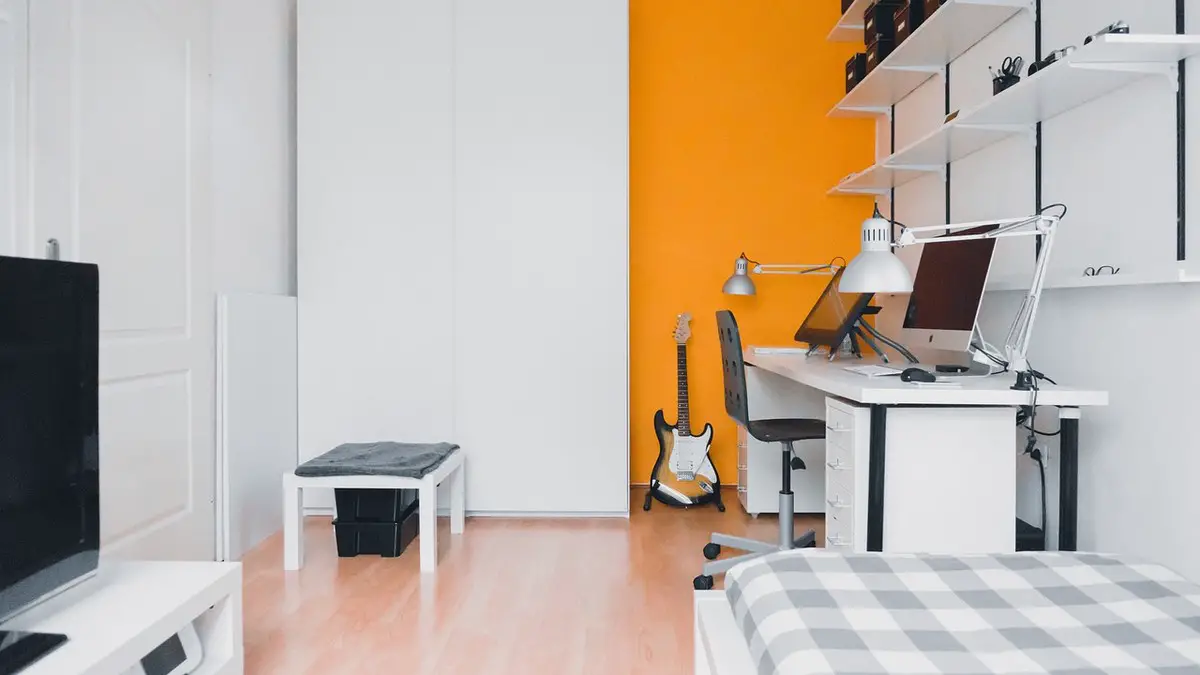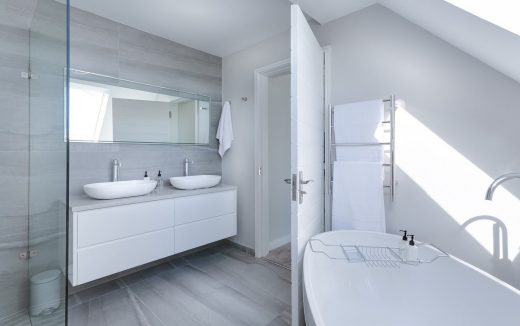Improve your indoor air quality with regular cleaning, HVAC maintenance tips, Tidy workplace advice
How to Improve Your Indoor Air Quality with Regular Cleaning
28 September 2023
Introduction
In the sanctuary of our homes, we often find comfort, safety, and rejuvenation. Yet, how often do we stop to think about the quality of the air we breathe indoors? Good indoor air quality is paramount for our health and well-being, and while many factors contribute to the air we breathe, one of the often overlooked aspects is the role of regular cleaning.
From dusting shelves to HVAC cleaning, maintaining a clean environment goes beyond just aesthetics; it has direct implications for the air that fills our lungs. Dive with us into this guide to discover the significance of regular cleaning and how it can substantially uplift the quality of your indoor air.
Understanding Indoor Air Pollutants
As we move from room to room, we’re often unaware of the invisible companions that float alongside us. These tiny particulates and gases, known as indoor air pollutants, can significantly impact our health if left unchecked. But what exactly are these pollutants, and where do they come from?
1. Common Indoor Air Pollutants
-
- Dust: A combination of dead skin cells, fibers, and minute debris that settles on surfaces and floats in the air.
- Pollen: Tiny particles from plants that can easily enter homes, especially during certain seasons.
- Pet Dander: Small, even microscopic, flecks of skin shed by cats, dogs, and other furry pets.
- Mold Spores: These can thrive in damp conditions, releasing spores that float in the air and can cause respiratory problems.
- VOCs (Volatile Organic Compounds): Gases emitted from certain solids or liquids, including paints, cleaning supplies, and even some cosmetics.
2. Sources of Indoor Air Pollution
- Furniture and carpets: These often trap dust, pollen, and dander, releasing them back into the air when disturbed.
- Household Products: Many contain chemicals that release VOCs, even when they’re stored.
- Cooking: Activities like frying can release fine particulates into the air.
- Outdoors: Pollutants can also enter our homes from the outside, be it through open windows, doors, or ventilation systems.
The presence of these pollutants can vary depending on the location, season, and activities within the home. For instance, a home located in a pollen-heavy region during spring might have elevated pollen levels indoors. A household with multiple pets might have higher concentrations of pet dander.
Awareness is the first step towards improvement. By recognizing these pollutants and understanding their sources, homeowners can make informed decisions about cleaning and other interventions to enhance their indoor air quality.
Benefits of Improved Indoor Air Quality
The air we breathe has an indisputable influence on our health, mood, and overall quality of life. But beyond just eliminating unpleasant odors or reducing sneezing, enhancing the quality of our indoor air brings a plethora of benefits that some may find surprising.
1. Reduction in Allergy Symptoms and Respiratory Problems
-
- Cleaner air means fewer allergens like pollen, dust, and pet dander. This can lead to a significant reduction in sneezing, itchy eyes, and other allergy symptoms.
- Respiratory conditions such as asthma can be aggravated by pollutants. By improving air quality, asthmatics can breathe easier and experience fewer flare-ups.
2. Enhanced Overall Wellbeing and Comfort:
-
- Breathing cleaner air can lead to better sleep quality, improved mood, and increased energy levels.
- A fresh indoor environment can make homes feel more inviting and comfortable, enhancing the living experience.
3. Lower Risk of Long-Term Health Issues:
-
- Continuous exposure to certain pollutants, especially VOCs, can have long-term health impacts, including respiratory diseases, heart disease, and even some forms of cancer.
- Regularly cleaning and ensuring good air quality can reduce these risks and promote a healthier lifestyle.
4. Economic Benefits:
-
- A cleaner home environment means fewer visits to the doctor, reducing medical bills related to respiratory and allergic reactions.
- Proper maintenance and cleaning of systems like HVAC can lead to more efficient operation, saving on energy bills.
5. Improved Cognitive Function:
-
- Several studies have indicated that good air quality can enhance cognitive function, leading to better concentration, sharper memory, and increased productivity.
It’s evident that the quality of air in our homes is not just about comfort; it’s intertwined with our health, our mood, our productivity, and even our wallets. By recognizing the multitude of benefits that come with better indoor air quality, we can better appreciate the significance of regular cleaning and other air-improving interventions.
How Regular Cleaning Improves Indoor Air Quality
We’ve established the significance of clean air and understood the usual culprits behind indoor pollution. Now, let’s delve into the actionable steps every homeowner can take to enhance the air quality within their living spaces.
1. Dusting the Right Way:
-
- Importance of Microfiber Cloths: Unlike regular rags, microfiber cloths have fine fibers that trap and hold onto dust, ensuring that it’s removed rather than spread around. By using these, you ensure a more efficient dusting process.
- High and Low Dusting: Always remember to address both high areas like shelves, light fixtures, and ceiling fans, as well as low spaces underneath furniture. Dust can accumulate anywhere, and addressing all areas is crucial.
2. Vacuuming with HEPA Filters:
-
- Why HEPA Filters Matter: High-efficiency particulate Air (HEPA) filters can trap particles as small as 0.3 microns (like pollen, dust mites, and pet dander) ensuring they’re not released back into the room.
- Frequency: To maintain optimal air quality, it’s advisable to vacuum high-traffic areas at least twice a week and other areas weekly.
3. Mopping After Vacuuming:
-
- Benefits of Using a Damp Mop: A damp mop picks up the residual dust left after vacuuming, providing a deeper clean.
- Recommended Cleaning Solutions: Opt for natural or mild detergents. Avoid products with strong chemical fragrances that can contaminate the air.
4. Regularly Changing and Cleaning HVAC Filters:
-
- Role of HVAC Filters: They trap large particles before they circulate through your heating and cooling system, preventing them from being redistributed into your indoor air.
- Maintenance: Filters should be checked monthly and replaced or cleaned as needed. A clogged filter can reduce the efficiency of your HVAC system and release trapped particles back into the air.
5. Keeping Humidity in Check:
-
- Mold & Humidity: Mold thrives in high humidity. By keeping indoor humidity levels between 30-50%, you can prevent mold growth and the subsequent release of mold spores into the air.
- Using Dehumidifiers and Air Conditioners: These appliances help regulate moisture, reducing the likelihood of mold growth and other humidity-related problems.
6. Using Natural or Mild Cleaning Products:
-
- Dangers of VOCs: Many cleaning products emit VOCs that can degrade indoor air quality. By choosing natural or low-VOC cleaning products, you’re ensuring safer air for everyone.
- Reading Labels: It’s crucial to read product labels and opt for those that indicate they are low in VOCs, biodegradable, or made from plant-based ingredients.
It’s not just about cleaning but cleaning right. By incorporating these practices into our routines, we’re not just aiming for a visibly clean home but a home where the air itself feels fresh and invigorating.
Additional Tips to Enhance Indoor Air Quality
While regular cleaning forms the foundation of good indoor air quality, there are supplementary measures that can further elevate the freshness of our living spaces. Here are some bonus tips to keep your indoor air pristine:
1. Introduce Indoor Plants that Purify the Air:
-
- Plants like spider plants, peace lilies, and snake plants are renowned for their air-purifying properties. Not only do they beautify your home, but they also help reduce certain pollutants, providing a natural means to fresher air.
2. Ensure Good Ventilation:
-
- Opening windows and doors, especially during or after cleaning, allows fresh outdoor air to replace the stale indoor air. This natural ventilation dilutes indoor pollutants and refreshes your living environment.
- Use exhaust fans in areas like the kitchen and bathroom to pull out unwanted odors and moisture that can lead to mold.
3. Invest in an Air Purifier:
-
- Ideal for homes in high-pollution areas or those with severe allergies, air purifiers with HEPA filters can significantly reduce indoor pollutants, providing an added layer of purification.
4. Regular Maintenance and Cleaning of Home Appliances and Fixtures:
-
- Appliances like air conditioners, humidifiers, and even your refrigerator can become sources of pollution if not cleaned and maintained regularly. Ensure they are in good working condition and free from mold and dust.
5. Avoid Smoking Indoors:
-
- Cigarette smoke contains thousands of harmful chemicals. Smoking indoors can drastically degrade indoor air quality. Designate outdoor smoking areas if needed.
6. Minimize the Use of Aerosols:
-
- Aerosol sprays often release a myriad of chemicals into the air. Opt for solid or liquid alternatives when possible, whether it’s deodorants, air fresheners, or cleaning products.
7. Keep Your Home Dry and Address Leaks Promptly:
-
- Dampness can lead to mold growth. Ensure that any leaks, whether from a broken pipe or a rainy day, are addressed promptly. Additionally, ensure spaces like basements are adequately ventilated and dry.
Implementing these additional measures can make the difference between good and exceptional indoor air quality. It’s about creating a holistic environment where every element, from the plants to the products, works in harmony to offer you the freshest breath of air.
Conclusion: The Breath of a Healthier Home
Clean air is as essential to our well-being as clean water and nutritious food. Our homes should be sanctuaries that shield us not just from external elements, but also from unseen pollutants that may lurk within. It’s a space where we grow, dream, laugh, and rejuvenate. Ensuring its purity, especially in terms of the air we breathe, is not just a task—it’s a commitment to our health, our loved ones, and our quality of life.
Regular cleaning, while often seen as a mere aesthetic pursuit, stands as a powerful tool in maintaining and elevating indoor air quality. From the simple act of dusting to more comprehensive interventions like HVAC maintenance, every effort counts. And as we’ve discovered, the journey doesn’t stop at cleaning. From choosing the right indoor plants to ensuring adequate ventilation, a plethora of choices and actions converge to shape the essence of our indoor atmosphere.
In this rapidly evolving world, amid urban sprawls and rising pollution, the quality of our indoor air becomes even more critical. And while the challenges are real, the solutions, as we’ve explored, are within our reach. It’s about making informed choices, being consistent in our efforts, and nurturing our living spaces with the same love and attention we bestow upon ourselves.
So, the next time you pick up that cleaning cloth or decide to open a window for some fresh air, know that you’re taking a step towards a healthier, happier, and more harmonious home.
Comments on this guide to Improve your indoor air quality with regular cleaning article are welcome.
Cleaning
Cleaners Posts
Hire Professional Cleaners every Now and Again
How to have your House Ready for Every Season
Office Building Articles
Commercial Architecture
Manila Grade ‘A’ Office Tower Building
Jilin Financial Centre Commercial Complex Building
Comments / photos for the Improve your indoor air quality with regular cleaning page welcome







